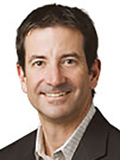 |
| Gilead's Sovaldi--Courtesy of Gilead |
The $84,000 U.S. treatment price that Gilead Sciences ($GILD) is charging for its hepatitis C drug Sovaldi has elicited pleas from politicians and threats from payers, who say the U.S. healthcare system cannot bear the cost. But Gilead has held firm, insisting it will save money for payers in the long run, even as the company is raking in billions of dollars by the quarter. But in India, Gilead will offer it at a discount--a 99% discount.
The drugmaker has told the Times of India that the drug will cost $900 (about 54,000 rupees) in India for a 12-week treatment. The price may drop further after Gilead works out deals with several Indian generics makers to produce the drug for the local market, Gilead Executive Vice President Gregg Alton told the newspaper. The company still has to complete clinical trials in India.
"The pricing of Sovaldi in India at $300 per bottle, is our low income pricing, similar to the price negotiated with Egypt for its government-run program," Alton said in a statement. "We hope with local production by our partners in India, higher volumes and continued research & development on the drug will lead to a further reduction in prices at a later stage."
 |
| Gilead EVP Gregg Alton |
Alton explained that the company has three pricing tiers that it uses for negotiations, figured on the per capita income and hepatitis C prevalence of a country: low-income, low middle-income and upper-middle income. The World Health Organization says India has about 12 million chronic sufferers of hepatitis C. According to the World Bank, India per capita income from 2009 through 2013 averaged $1,499. That compares with the U.S. at $53,143. The newspaper says that current treatments for the disease in India run about $6,000 and require a 24- to 48-week course of injectables that come with serious side effects. So Sovaldi will be cheaper and easier to administer, with fewer side effects and the ability to cure many of the cases.
Drugmakers have other considerations to factor in when pricing essential but expensive drugs in India. The government has, and has exercised, the authority to grant a compulsory license for a drug that it considers essential but too expensive for the Indian market, where few people have insurance. When that happens the drugmaker not only loses direct sales in India but also runs the risk of losing control of its product. India used the provision to grant a license to Natco for Bayer HealthCare's cancer drug Nexavar, and the German company is now in court trying to keep Natco from selling it outside of India. Natco has asked the government patent office to block Gilead's patent for the drug in that country, which would give it a shot at producing it itself.
But all of those factors are unlikely to keep critics of Sovaldi's price in the U.S. from pointing to India as proof that the drugmaker could do better on price in the U.S. Gilead execs have been called to explain its pricing to Congress after research from Georgetown University and the Kaiser Family Foundation found that Sovaldi will increase Medicare Part D drug spending by as much as $6.5 billion in 2015 alone. That would cause overall Medicare drug spending to rise by 8%.
And pharmacy benefits manager Express Scripts ($ESRX), which handles drug reimbursement for a big chunk of the U.S. private insurance market, is trying to rally a coalition to refuse to use Sovaldi after a competitor hits the market, which might be as early as this fall. The response to Sovaldi's price is about the same in Europe, where 14 countries will share information to help one another negotiate better prices for the drug even though Gilead is likely to price it less there than in the U.S.
So far, Gilead has been able to shake off those threats and reap the rewards of the most successful drug launch ever. In reporting its Q2 results last month it said that since its December launch, Sovaldi has been prescribed to 80,000 patients in the U.S. and Europe. In the first two quarters this year, it has brought in $7.8 billion. But a host of other players have competing drugs in development or awaiting approval, and the market picture could change dramatically in short order.
- read the Times of India story